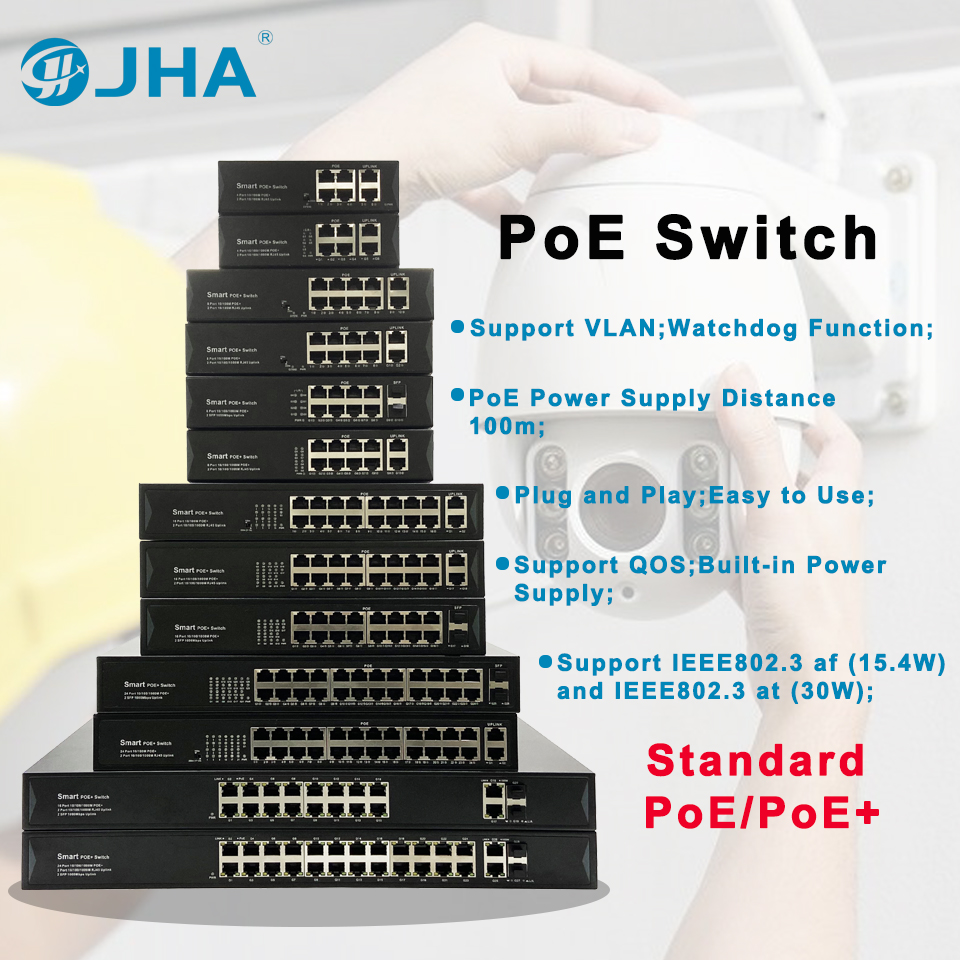Power over Ethernet (POE) technology has revolutionized the way we power our devices, providing convenience, efficiency and cost savings. By integrating power and data transmission on an Ethernet cable, POE eliminates the need for a separate power cord, making it ideal for a variety of applications such as IP cameras, wireless access points, and VoIP phones. However, before investing in any network solution, it is crucial to understand the differences between standard and non-standard POE switches.
Standard POE switches follow the Institute of Electrical and Electronics Engineers (IEEE) 802.3af or 802.3at standards. These industry-recognized standards specify the maximum power output that a switch can deliver to POE-compliant devices. The most common power supply in standard POE switches is 48V.
On the other hand, non-standard POE switches may not comply with these IEEE standards. They often use proprietary techniques that deviate from established norms. While these switches may appear to be a viable option due to their potentially lower cost, they lack the interoperability and reliability of standard POE switches. It’s important to understand the differences between the two and the potential risks associated with non-standard POE switches.
One significant difference between standard and non-standard POE switches is the voltage they provide to connected devices. Standard POE switches operate on 48V power. These options are widely accepted and supported by most POE-enabled devices on the market. They provide reliable, stable power, ensuring seamless operation and optimal performance.
In contrast, non-standard POE switches use voltage options other than 48V. While some of these switches offer higher power delivery capabilities, they lack compatibility with mainstream POE devices. This incompatibility can cause a variety of issues, including lack of power, reduced device performance, and even potential damage to connected devices.
To differentiate between standard and non-standard POE switches, start by checking the power supply specifications provided by the switch manufacturer. Compatible switches will clearly indicate whether they are compliant with the IEEE 802.3af or 802.3at standard, as well as the voltage options they support. These switches will specify a maximum power output for each port, ensuring you can safely power POE devices.
On the other hand, non-standard POE switches may not adhere to these well-defined standards. They may offer higher power output or use non-standard voltage options, such as 12V or 56V. Be careful when considering this type of switch as they may not provide the power levels your device requires or may cause the device to fail prematurely.
Another way to differentiate between standard and non-standard POE switches is to rely on reputable network equipment manufacturers. Established manufacturers produce reliable and standardized POE switches that comply with industry specifications. They undergo rigorous testing to meet quality standards and deliver superior performance.
When you need POE switches, you can contact us at any time. Our company, JHA Tech, has been focusing on the R&D, production and sales of various switches since 2007. It not only has a very big advantage in price, but also is very guaranteed in quality because we have obtained professional and authoritative certificates;
Post time: Nov-27-2023






